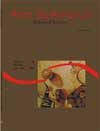Growth and first sexual maturation size of <em>Salminus maxillosus</em> Valenciennes, 1849 (Characiformes, Characidae), in Mogi Guaçu river, state of São Paulo, Brazil
Abstract
Age and growth were estimated from counts of hyaline zones in scales of dourado, Salminus maxillosus Valenciennes, 1849, of Mogi-Guaçu River, state of São Paulo. The time of annuli formation was established by the scales’ marginal growth quotient variation. The first sexual maturation size was determined, and the reproductive period was defined by the analysis of the maturation curve, based on the gonadosomatic index variation, the relative frequency of the maturation stages and of the hepatosomatic index. Annulus formation is annual, occurring during the spawning period. The first annulus formation was observed in the second year of the fish life, corresponding to 346.7 mm and 447.4 mm for males and females, respectively. Up to seven annulus for males and eight for females were observed. The growth curve in length were adjusted by the mathematical expression of von Bertalanffy (1938) and the growth curve in weight by the deductive method from the expressions of the length growth curve and weight/length relationship. The L∞ and W∞ values were 874.0 mm and 8804 g for females and 713.0 mm and 4416.0 g for males. The growth rates were 0.3917 and 0.3572 for females and males, respectivelyDownloads
Download data is not yet available.
Published
2008-05-09
How to Cite
Barbieri, G., Salles, F. A., & Cestarolli, M. A. (2008). Growth and first sexual maturation size of <em>Salminus maxillosus</em> Valenciennes, 1849 (Characiformes, Characidae), in Mogi Guaçu river, state of São Paulo, Brazil. Acta Scientiarum. Biological Sciences, 23, 453-459. https://doi.org/10.4025/actascibiolsci.v23i0.2697
Issue
Section
Biology Sciences
DECLARATION OF ORIGINALITY AND COPYRIGHTS
I Declare that current article is original and has not been submitted for publication, in part or in whole, to any other national or international journal.
The copyrights belong exclusively to the authors. Published content is licensed under Creative Commons Attribution 4.0 (CC BY 4.0) guidelines, which allows sharing (copy and distribution of the material in any medium or format) and adaptation (remix, transform, and build upon the material) for any purpose, even commercially, under the terms of attribution.
Read this link for further information on how to use CC BY 4.0 properly.
0.6
2019CiteScore
31st percentile
Powered by 

0.6
2019CiteScore
31st percentile
Powered by 











1.png)




3.png)













